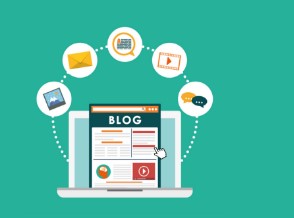When it comes to blogging, presentation matters just as much as content. WordPress, being one of the most popular blogging platforms, offers a wide array of tools and options to format your posts to be both visually appealing and user-friendly. Whether you’re a beginner or an experienced blogger, understanding the right formatting techniques can significantly enhance the readability, aesthetic appeal, and SEO performance of your blog.
In this article, we will explore a variety of helpful formatting tips for WordPress bloggers to improve the quality of their posts, attract more readers, and optimize content for search engines.
1. Use Headings and Subheadings Effectively
One of the most important formatting tips for WordPress bloggers is to use headings and subheadings properly. These not only break up your content into manageable sections but also improve the overall readability of your posts. Readers should be able to scan your post quickly and find the information they’re looking for.
In WordPress, you can use the Heading 1 (H1) for the main title of the post, and Heading 2 (H2) and Heading 3 (H3) for subheadings. Avoid using too many H1 tags within a single post, as this can confuse search engines and negatively impact your SEO.
Why headings matter:
Improved readability: Headings create structure and allow readers to navigate the content easily.
SEO benefits: Search engines like Google give more weight to keywords in headings. Well-structured headings help search engines understand the topic of the post.
User experience: Well-defined headings allow users to quickly skim through the post and find the sections that interest them most.
2. Use Bullet Points and Numbered Lists
Bullet points and numbered lists are great tools to enhance the readability of your content. They help break down complex information into digestible chunks and allow your readers to skim your post for key takeaways.
When to use bullet points:
- To list items, ideas, or features that don’t need to follow a specific order.
- To highlight key points in a concise manner.
- To improve the visual structure of the post.
- When to use numbered lists:
To present steps in a process or instructions.
When you want to show an order of importance or sequence.
In WordPress, creating lists is simple with the editor’s built-in tools. Just click on the bullet or numbered list icon, and WordPress will automatically format the text for you.
3. Incorporate White Space
Whitespace, or negative space, is the empty space between elements in your blog post, such as paragraphs, images, or headings. This spacing plays a crucial role in improving readability and user experience.
Benefits of white space:
Prevents visual clutter: A clean, uncluttered layout is more inviting and easier to read.
Enhances focus: With appropriate spacing, the reader’s attention is directed to the content instead of the layout.
Improves scanning: Readers tend to skim articles before deciding to dive into the details. White space allows them to do this more effectively.
In WordPress, you can adjust the spacing by tweaking the theme settings or manually adding breaks (e.g., using the “Enter” or “Shift + Enter” keys to add spacing between paragraphs).
4. Optimize Your Text with Short Paragraphs
Long blocks of text can overwhelm your readers and make them click away from your post. To avoid this, break your content into shorter paragraphs, ideally between 2-4 sentences each.
Why short paragraphs work:
Easier on the eyes: Large paragraphs are difficult to read on screens. Shorter paragraphs improve readability.
Better flow: Short paragraphs provide natural breaks that make the content easier to follow.
Encourage scrolling: The more digestible the content, the longer the reader will stay on your site.
5. Use Images and Media Wisely
Visuals are an essential part of modern blogging. They not only add appeal to your content but can also help break up large blocks of text and make the post more engaging. In WordPress, inserting images, videos, or infographics is simple, but you must follow best practices for formatting them.
Image optimization tips:
Alt text: Always include descriptive alt text for images. This not only helps with SEO but also improves accessibility for users with disabilities.
Image size: Large images can slow down your website, leading to poor user experience and SEO performance. Use image optimization tools to compress images without sacrificing quality.
Alignment: Use WordPress’s alignment tools to position images within the text. Images can be aligned left, center, or right depending on the design of your post.
Use other media types like:
Infographics: Infographics can explain complex topics in a visually appealing way.
Videos: Embed relevant YouTube or Vimeo videos that add value to the content.
Galleries: For posts that showcase multiple images, use WordPress’s gallery feature to present images in a sleek grid layout.
6. Enhance Readability with Fonts and Colors
The typography and color scheme you choose for your blog can greatly impact the readability of your content. WordPress themes typically come with predefined fonts, but you can customize them further through the Customizer or by adding custom CSS.
Tips for font usage:
Choose readable fonts: Stick to fonts that are easy on the eyes. Sans-serif fonts like Arial, Helvetica, and Open Sans are good options for web content.
Font size: Your body text should be large enough to read comfortably (typically 16px or higher).
Heading fonts: Make sure your headings stand out by using a different font style or weight.
Contrast: Use high contrast between text and background for easy readability. Dark text on a light background is typically the best combination.
Colors:
Choose a simple and consistent color palette. Too many colors can be distracting.
Ensure sufficient contrast between text and background. If your background is dark, use light text and vice versa.
7. Use Block Quotes for Emphasis
A block quote is a great way to highlight a key idea, quotation, or statistic in your post. In WordPress, block quotes are easy to add by selecting the text and clicking the quote icon in the editor.
Benefits of block quotes:
Visual distinction: Block quotes stand out from the rest of the text, helping important points grab the reader’s attention.
Improved flow: They break up the monotony of text, giving the reader a visual rest while also reinforcing the message.
Use block quotes sparingly, though, as too many can detract from the impact and make the post look cluttered.
8. Utilize Anchor Text and Internal Linking
Internal linking is a powerful way to improve both the SEO of your WordPress blog and the user experience. By linking to other relevant posts on your site, you encourage readers to explore more content, which can reduce bounce rates and increase time spent on your site.
Best practices for internal linking:
Use anchor text (the clickable text in a hyperlink) that is descriptive and relevant to the linked content.
Link to relevant posts and pages that provide additional value to the reader. For example, if you’re writing about SEO tips, link to your past posts on keyword research, link building, etc.
Avoid over-linking, as it can overwhelm the reader and dilute the value of each link.
9. Mobile Optimization is Essential
A significant portion of web traffic comes from mobile devices, so it’s crucial to ensure your WordPress blog is optimized for mobile viewing. Most WordPress themes are responsive, meaning they automatically adjust to fit the screen size of different devices, but it’s still important to test how your posts look on mobile.
Mobile optimization tips:
Keep it simple: Avoid overly complex layouts that may not display well on smaller screens.
Test your posts: Use tools like Google’s Mobile-Friendly Test to ensure your posts look great on all devices.
Optimize images: Use smaller image sizes for mobile users to improve loading speed.
10. Add Call to Action (CTA) Buttons
CTAs are essential for converting your readers into subscribers, customers, or followers. Whether it’s encouraging them to leave a comment, subscribe to your newsletter, or check out your products, using well-designed and strategically placed CTA buttons can drive engagement.
Best practices for CTAs:
Make them stand out: Use contrasting colors to make your CTA buttons easily noticeable.
Place them strategically: Position CTA buttons at the beginning, middle, and end of your posts for maximum visibility.
Be clear and direct: Use concise text that clearly tells the reader what to do, such as “Subscribe Now” or “Read More.”
Effective formatting is a vital aspect of successful blogging. By paying attention to how you structure your content, use typography, incorporate visuals, and optimize for SEO, you can create blog posts that not only capture readers’ attention but also provide a great user experience.
WordPress offers a range of tools to help you format your blog posts effectively, but the key is to keep things simple, user-friendly, and aligned with your goals. With these tips, you’ll be well on your way to creating polished, professional blog posts that attract more visitors, encourage interaction, and rank better on search engines.




